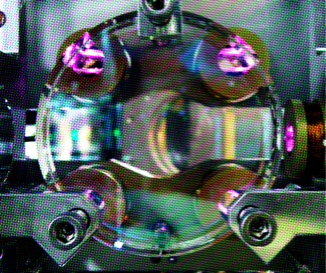|
Size: 5945
Comment:
|
Size: 6041
Comment:
|
| Deletions are marked like this. | Additions are marked like this. |
| Line 29: | Line 29: |
| === The 102nd REM: November 11th, 2019, Friday === | === The 102nd REM: November 15th, 2019, Friday === |
| Line 37: | Line 37: |
| * Title: TBA | * Title: ''"Modeling gravitational waveforms and electromagnetic signals from neutron star binary mergers"'' |

重力波研究交流会
GW research exchange meeting
Upcoming GW-REMs
The 103rd REM: December
- Time: 13:00-14:00
- Speaker: TBA
- Title: TBA
The 102nd REM: November 15th, 2019, Friday
- Time: 13:00-14:00
- Location: ICRR, the Kashiwanoha campus (tentative)
- Speaker: Kyohei Kawaguchi (ICRR, University of Tokyo)
Title: "Modeling gravitational waveforms and electromagnetic signals from neutron star binary mergers"
The past GW REM talks
The 101st REM / ISAS Astrophysics Colloquium : August 9th, 2019, Friday
- Time: 13:00-14:00
- Location: Room 1537, Bild.A, 5F in JAXA Sagamihara campus
- Speaker: Morio Toyoshima (NICT)
Title: "Recent Trends of Space Laser Communications"
- Information for Zoom remote connection
Meeting URL: https://zoom.us/j/5045179604
- password: ask an organizer
Jointly organized with the ISAS Astrophysics Colloquia
The 100th REM: July 12th, 2019, Friday
- Time: 13:00-14:00
- Speaker: Shoichi Oshino (ICRR, the University of Tokyo)
Title: "A review on BBH formations in N-body simulations"
- Abstract:
Since the first gravitational wave was detected by LIGO, several BH merging events have already been observed. However, the process of BBH formation is still unclear. Here, I introduce studies that use N-body simulations to investigate BBH formation by gravitational interactions in star clusters.
- Zoom connection information
Meeting URL: https://zoom.us/j/5045179604
- password: ask the organizers
The 99th REM: June 14th, 2019, Friday
- Time: 13:00-14:00
- Speaker: Hisaaki Shinkai (Osaka Inst. Tech.)
Title: "INO: Interplanetary Network of Optical Lattice Clocks"
ref: Int. J. Mod. Phys. D. (2019) https://doi.org/10.1142/S0218271819400029 or arXiv:1809.10317
- Abstract
The new technique of measuring frequency by optical lattice clocks now approaches to the relative precision of (\Delta f/f)=O(10^{-18}). We propose to place such precise clocks in space and to use Doppler tracking method for detecting low-frequency gravitational wave below 1 Hz. Our idea is to locate three satellites at one A.U. distance (say at L1, L4 & L5 of the Sun-Earth orbit), and apply the Doppler tracking method by communicating ``the time" each other. Applying the current available technologies, we obtain the sensitivity for gravitational wave with three or four-order improvement (h_{n}\sim 10^{-17} or 10^{-18} level in 10^{-5} Hz -- 1 Hz) than that of Cassini satellite in 2001. This sensitivity enables us to observe black-hole mergers of their mass greater than 10^5 M_\odot in the cosmological scale. Based on the hierarchical growth model of black-holes in galaxies, we estimate the event rate of detection will be 20-50 a year. We nickname "INO" (Interplanetary Network of Optical Lattice Clocks) for this system, named after Tadataka Ino (1745--1818), a Japanese astronomer, cartographer, and geodesist.
- Zoom connection information
Meeting URL: https://zoom.us/j/5045179604
- password: ask the organizers
The 98th REM: May 17th, 2019, Friday
- Time: 13:00-14:00
- Speaker: Federico Paoletti and Irene Fiori (European Gravitational Observatory)
Title: "Virgo environmental status"
- Zoom connection information
Meeting URL: https://zoom.us/j/5045179604
- password: ask the organizers
Archives for the past talks
- Most of the archives for the earlier years are written in Japanese (it is a history!).
Useful links
How to receive the announcements
 One has to subscribe to the mailing list called gw_comm in order to receive our announcement emails. Please ask one of our organizers for subscription.
One has to subscribe to the mailing list called gw_comm in order to receive our announcement emails. Please ask one of our organizers for subscription. The organizers can be found in this page.
